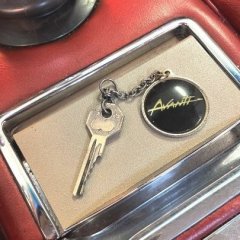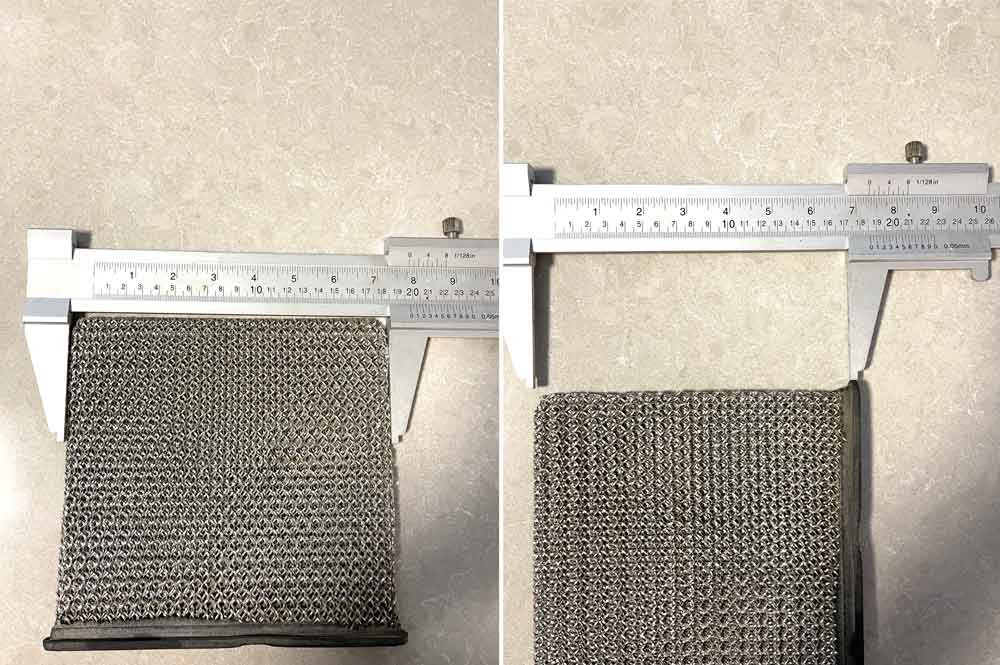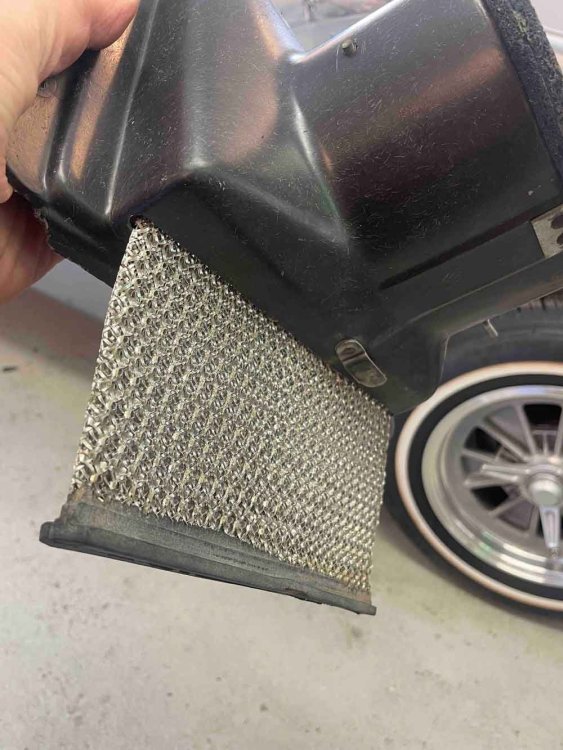-
Posts
426 -
Joined
-
Last visited
Content Type
Profiles
Forums
Events
Posts posted by Leo B
-
-
19 minutes ago, Nelson said:
Can a PCV really reduce the pressure in a crankcase by that much? It seems like it would be no match for the valve cover breathers. Do you theorize the valve was stuck open allowing pressure from the blower to increase pressure n the crankcase?
The oil leak disappeared completely when I cleaned the valve. It's a shame because now I can't remember which way it was stuck. In any case, it was stuck and didn't rattle at all and created an overpressure in the crankcase.
-
Problem solved. PCV Valve (Positive Crankcase Ventilation) was stuck and this created pressure in the crankcase (and oil pan) and thus also to the fuel pump. After cleaning PCV Valve all ok.
Workshop Manual use word "Check Valve".
Thank you all 😉👍
-
Thank you John C, I opened the pump and I think the leak is coming from the stem seal, which has a gaping hole for the stem. Need to by new repair kit.
-
1 minute ago, Leo B said:
The engine oil is from fuel pump. I see this when I disconnet the hose between the pump and Paxton. My conclusion is that the oil gets onto the pump diaphragm through the pump diaphragm spring seal. I can't think of anything else. Isn't there a lot of oil pressure in the timing gear cover?
-
1 minute ago, mfg said:
Does the supercharger maintain its oil level? Sometimes a worn Paxton will throw a bit of its lubricant into carb.
The engine oil is from fuel pump. I see this when I disconnet the hose from the pump. My conclusion is that the oil gets onto the pump diaphragm through the pump diaphragm spring seal. I can't think of anything else. Isn't there a lot of oil pressure in the timing gear cover?
-
About Avanti R2. I have a closed fuel pump (as R2 should be, as I understand it, without ventilation) to which I have connected the Paxton hose. There is pressure on the hose from the Paxton (I have checked).
Now the problem is that the oil gets from the top of the fuel pump through the supercharger connection to the carburetor. Where's the problem? Is there too much oil in the timing gear cover that travels up through the pump to the supercharger connection? Have I connected correctly? I can't tell if it only runs at low revs.Edit: I have a new R2 pump and the seal on top of the spring should be fine. Maybe not after all. How can oil get on the pump diaphragm?
Do I need new better rebuilt kit? -
On 5/13/2024 at 4:26 PM, Avanti1963! said:
Does anyone have a few good pictures of how the rebuild pieces are mounted inside an R2 fuel pump?
In particular, the little tiny springs and round washers. What order do those go under those two little mushroom pieces?
Also, how is the flat gasket between the two bottom housing pieces oriented? Which cavity is open and which is covered when the gasket is in place?
I just rebuilt mine and it's not pumping. Not sure what I did wrong.
This is good help also:
https://www.428cobrajet.org/how-to-fuel-pumpTo test:
You can test it manually. Put the pump arm in a vise and pump. You can feel how it sucks from inlet and blows from the outlet the air. -
On 5/13/2024 at 4:26 PM, Avanti1963! said:
Does anyone have a few good pictures of how the rebuild pieces are mounted inside an R2 fuel pump?
In particular, the little tiny springs and round washers. What order do those go under those two little mushroom pieces?
Also, how is the flat gasket between the two bottom housing pieces oriented? Which cavity is open and which is covered when the gasket is in place?
I just rebuilt mine and it's not pumping. Not sure what I did wrong.
Hope this helps:
-
Thank you psdenno and mfg.
I am in Finland (AOAI Calendar May 2024) and you are the only contacts for me. I have done almost all the restoration work alone, so your help is always important to me. I await a response from Dave Thibeault. Hope he has ready solution for me. -
Hi,
Where to get Hurst Shifter Kit?
Sorry, I find the answer from older topic. -
All winter I had been wondering what the spring is on my desk and where it got there... Now it turned out that it is from the flow control valve of the pump. The cause of the error was found. Likewise guilty. 🙄
The leak was found in the pump hose connection. I closed it very well on the table and sealed it with Locktite Hydraulic Sealant. No leak anymore and pump works fine. -
The problem was that the Power Steering pump leaked from the central seam of the pump and the pump got empty and the Power Steering do not work after I put in new oil (STP Steering Oil). I haven't opened anything yet. I will repair the pump anyway. It seems to me that the oil is not circulating.
I'm convinced that the pump can break down without oil, but does the lack of oil damage also other parts?
-
13 minutes ago, mfg said:
Me too….. however on the Jeep I mentioned I ended up pulling the engine… at least Studes use a bushing, while some vehicles use a sealed ball bearing pilot that sometimes goes south!
👍🤣
I drow today test run and all seems to be fine.
Edit: My Stude is AOAI May Calendar Girl😎 -
I found the problem: Clutch Fingers where in different height. They weren't on the same level.
-
11 hours ago, mfg said:
Good thought…. and sometimes dried up or gummy old grease at pilot bearing can cause an annoying drag on input even with pedal at full travel.
I would think that when the car is stationary, the engine is running, the gear is on and the clutch is in the bottom, then the tight pivot bearing would wear looser.🤔
-
1 hour ago, mfg said:
Could possibly be a tight pilot bearing causing input shaft to drag…. I owned an ‘89 Jeep Wrangler that had that problem…with same symptoms.
Very good point. Tightness can occur when the pilot bearing is tapped into place. When replace the pilot bearing, for checking, I could make a test shaft that would be exactly the same size as the shaft of the gear box. Not a difficult thing.👍
-
19 hours ago, Leo B said:
I am asking for your help. I have a 1963 4 Speed. The clutch disengages as it should, but when you start moving, the gear will not engage unless you press the clutch to the very limit. Clutch shakes also a little. I conclude that the clutch comes off at an angle, allowing the gearbox to spin a little along with it. I have restored the pedals, New Clutch Plate, new Pressure Plate and Clutch Cover. The Releash Shaft has been restored and all the bushings and likewise the Suport Brancet. Whole Clutch Pedal Travel is OK. New Pressure Bearing. Fly wheel looks fine (have not measured). The only thing left is Housing, which might have wrong alignment? Could this be the reason? Something else?
I will remove the transmission and check the alignment of the Bell Housing. It is now installed according to the alignment of the dovel pins and all the surfaces are clean, but it may be wrong if Bell Housing has been replaced or installed without checking alignment. I'll tell you how wrong it is (if it is).
-
I am asking for your help. I have a 1963 4 Speed. The clutch disengages as it should, but when you start moving, the gear will not engage unless you press the clutch to the very limit. Clutch shakes also a little. I conclude that the clutch comes off at an angle, allowing the gearbox to spin a little along with it. I have restored the pedals, New Clutch Plate, new Pressure Plate and Clutch Cover. The Releash Shaft has been restored and all the bushings and likewise the Suport Brancet. Whole Clutch Pedal Travel is OK. New Pressure Bearing. Fly wheel looks fine (have not measured). The only thing left is Housing, which might have wrong alignment? Could this be the reason? Something else?
-
Im thinking to change to Dual. Is this simple solution?
https://avantiparts.biz/dual-master-cylinder-conversion-kit/
-
-
10 hours ago, Dunkin said:
Leo, is that one you made, if so what are the dimensions? Thank you.
This is the original. I'll give you the measurements. Please wait.
-
-
Part number for 1963 is 1556919
If you dont find the filter you can do it yourself. Its aluminium mesh. Same kind like "cooker hood grease filter mesh". Very simple.
https://www.studebaker-info.org/Avanti/ASM/avantishopclimatizer/avantishopclimatizer.html -
On 1/21/2024 at 6:51 PM, JimM said:
What type of LEDs are you using? Brand, number, etc?
I found this:
Louis Schucart - AOAI - 01 Aug 2018
Go to Super Bright LED website and order red LED replacements. The are red and bright and better visibility than incandescent bulbs.
Order Red Lightshttps://www.superbrightleds.com/catalog/product/view/id/204234/+color-Amber+packamt-10-Pack





R2 Oil from fuelpump to blower and to carb.
in 1963-64 Avanti
Posted
Now that I think about it, I'm pretty sure the valve was closed the whole time. If it gets stuck, the tip of the needle is probably stuck. You can test how strong the flow is in the intake manifold/valve by disconnecting the hose. It sucks plenty of air from the crankcase.
I guess that many people do not service the valve from time to time and think that the cause of the oil leak is something else. The valve gets blocked because the air it sucks in is oil mist.